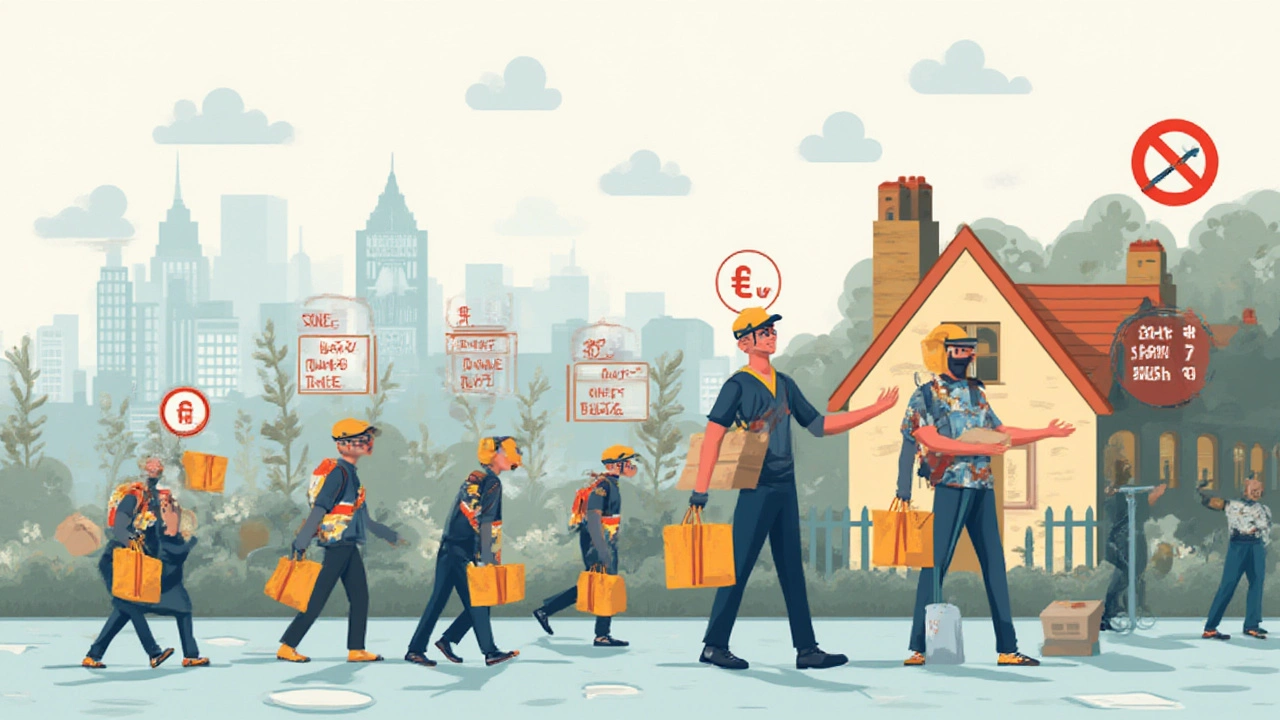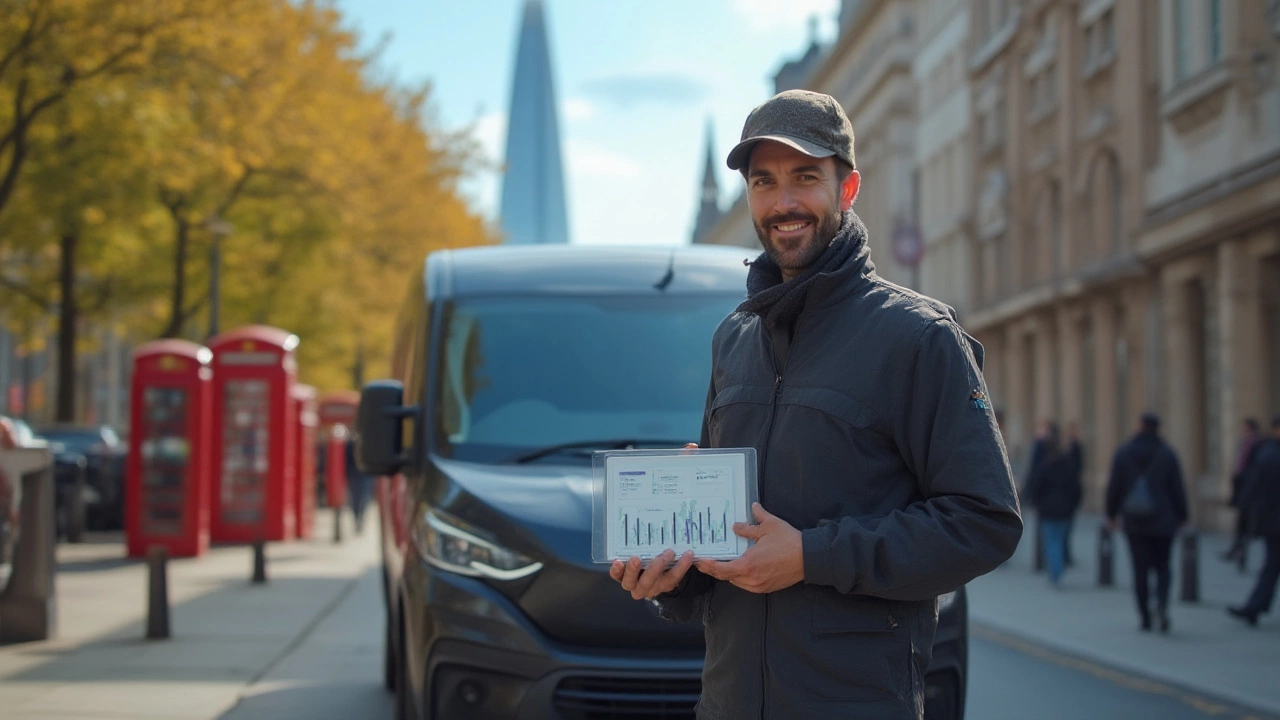It might sound wild, but some courier jobs in the UK outpay entry-level desk jobs—by a lot. You’d think, with the boom in online shopping, every driver is raking it in. But there’s a world of difference between dropping parcels for a food app and ferrying blood samples in a refrigerated van at 2 am. Suddenly, the pay landscape shifts—and so does the skill requirement.
Move beyond stereotypes of mopeds and brown cardboard boxes. These days, couriers handle everything from same-day art deliveries for London galleries to high-security pharmaceutical transports nationwide. The biggest payouts don’t always go to those who rush around the city’s postcodes with greasy chip wrappers on the seat. Instead, top couriers have found niche markets, upskilled—or play the system smarter than most. The obvious takeaway? Yes, you can really earn £50k, £70k, or more annually. But how, where, and for whom you deliver matters more than ever.
Breaking Down Courier Pay: Where the Money Actually Goes
Let’s strip it back: most people imagine couriers as blokes (or lasses) rushing parcels for Amazon or gig economy apps. These jobs make up the bulk of the workforce, but they aren’t the top earners. Your average Deliveroo or Yodel driver can expect anywhere from £8.50 to £15 an hour, often as a contractor footing their own van fuel, insurance, and tax. Once you deduct those expenses—especially after the 2024 hike in National Insurance for self-employed people—the take-home pay shrinks fast.
But when you zoom in on the peak, specialist roles break the mold. Same-day medical couriers, those trusted by NHS hospitals to transport urgent samples or time-sensitive medication, bring in substantially more. For instance, specialist medical courier jobs (often requiring ADR certification) can fetch £25 to £45 per hour—especially during odd hours or on-demand routes. Some companies, like CitySprint or Speedy Freight, offer guaranteed shift rates between £150 and £300 daily if you take the toughest overnight or national runs.
If you step up into the world of on-board couriers (OBCs), pay rockets further. These professionals literally fly packages—sometimes as small as a USB stick—across Europe or worldwide at a moment’s notice. The reason? Think replacement jet engine parts or confidential legal documents. OBCs can bank £1,000-£3,000 for a single international trip, especially if it’s last minute and critical. These jobs are rare, but they top any league table for day-rate earnings.
High-value art and jewellery couriers, often used by galleries and auction houses, are another well-paid niche. Their annual salaries range from £40,000 to £60,000, with some roles offering bonuses per high-risk or VIP delivery. Why the big numbers? These positions demand a ton of trust, absolute punctuality, and frequently require armed escort or advanced driving skills—a totally different class of responsibility compared to everyday parcel drops.
For comparison, here’s an honest table breaking down pay in UK courier specialisms as of July 2025:
| Courier Role | Average Daily Rate | Top Potential Annual Pay | Skills/Certifications Needed |
|---|---|---|---|
| Medical (ADR Certified) | £200 - £350 | £65,000 | ADR, Enhanced DBS |
| On-Board International | £300 - £1000 (per day) | £100,000+ | Passport, Security Checks |
| Express/Overnight Multi-drop | £120 - £190 | £40,000 | Clean Licence |
| High-Value Art/Jewellery | £200 - £350 | £60,000+ | Security Clearance |
| Standard Multi-drop (Amazon/Apps) | £75 - £140 | £27,000 | None/Basic DBS |
The elephant in the room: most high-paid courier work isn’t a walk-in-the-door situation. You’ll need spotless records, skills certificates, and nerves that could handle an MI5 interview. But for those with the drive (no pun intended), the top roles are extremely lucrative and in greater demand than you think—especially with NHS backlogs and urgent supply chains in the UK.
How to Reach the Top Pay Bracket as a Courier
If you want to leave the average gig-app pay behind, you’ve got to make strategic moves. First, focus on certifications. The ADR (carriage of dangerous goods) certificate, for example, opens up jobs in medical deliveries, hazardous materials, and chemical transport. Most ADR courses cost a few hundred quid and take a week, but they double or even triple your pay ceiling. Enhanced DBS checks—required for handling medicines or sensitive items—are equally critical.
Next is your van set-up: invest in a refrigerated van or one with specialist security. Medical and art-based contracts almost always demand temperature control or tamper-proof locks. It’s not cheap upfront, but it pays for itself fast. There’s a niche for everything these days—don’t underestimate teched-up pet couriers for rare breeds or high-end appliance deliveries where you’re in charge of both transport and installation. Those gigs often pay a base plus customer tips.
Networking isn’t just for bankers. A lot of high-pay courier work floats under the radar, passed on by word of mouth, not in job ads. Get to know other drivers. Join courier co-ops, social media groups, or speak directly with operations managers at logistics firms. That’s where the real nuggets show up: “Can you get from Liverpool to Zurich by midday tomorrow?” or “We need someone we trust to run medical samples overnight.”
Want a quick tip? Check for contracts with NHS trusts or local authorities. After Brexit, supply snags made reliable couriers gold dust. As public sector logistics tighten, pay rates for trusted drivers have soared—especially for those with flexible hours and a tolerable relationship with motorway coffee.
Lastly, always track your expenses (really—they mount up). Diesel, insurance, and wear and tear are unavoidable. Master your own bookkeeping or use accountant apps that track it for you. High-paid jobs only mean real-life profit if you’re running lean and smart. Keep all receipts—it makes a palpable difference at year-end.

Myths and Surprises: What Most People Get Wrong About Courier Salaries
There’s a lot of word-of-mouth “truth” about courier work, but plenty of it’s out of date or flat-out wrong. The first shock? Drivers don’t have to be chained to 60-hour weeks for decent money—if you specialise. Niche medical couriers often do 4-night stints and still clear more than someone slogging 12 hour shifts for a gig app. It’s not just volume: it’s expertise.
Another common myth is that London is always where top money’s at. Actually, some of the best-paid work is in the North: Liverpool, Manchester, and Leeds have strong tech, NHS, and legal sectors hungry for reliable, niche drivers. During 2024, a Merseyside lab courier contract hit the headlines for its hefty £70k package—double what similar routes fetched in the capital. My mate Dan switched from London multi-drop to a high-value tar shipment route in North Wales. His actual drive time dropped, but his bank balance didn’t.
Some folk think it’s impossible to break into the top. Not true. While OBC jobs are rare, medical and art courier roles plus urgent appliance deliveries are expanding with every busy year on the UK logistics map. If you’re proactive, grab the right certificate and hustle, you’ll get your shot faster than expected. Also, don’t ignore part-time high-value jobs. Many high-fee specialist courier runs are contract-based—do two a week, keep another gig on the side, and you’ve got the holy grail: actual work-life balance.
Here’s another odd one: wealthier clients sometimes tip big. If you deliver high-end tech or rare art to Mayfair penthouses or estates in Cheshire, it’s not unheard of to get £50-£200 on top of your fee for a flawless service. The best stories out there always start with “You wouldn’t believe who I delivered a Cartier clock to last week…”
Future Outlook: How Courier Royalty is Changing in 2025 and Beyond
As everything becomes same-day, faster, smaller and riskier, the top end of courier salaries looks more promising than ever. In 2025, NHS reforms and continued supply chain headaches mean even more demand for fast, secure, flexible delivery pros. AI and drones still aren’t close to overtaking specialised human courier work for critical, one-off or high-value tasks—there’s too much at stake when a temperature dip can ruin a million-pound painting or a blood sample.
Major employers like DHL, CitySprint, and medical logistics outfits are offering more permanent, high-paying contracts with overtime and shift premiums. The appetite for on-board couriers especially is on the rise, with growing calls for fast, reliable cross-border delivery. If you’re serious about rising up the food chain, focus on certifications that prove your worth and expert handling of sensitive cargo. Diversifying your skills—first aid certified, multilingual, or equipped for extreme weather—turns you from “just a driver” to a can’t-live-without asset.
The best advice? Stay plugged in to market changes. New regulations now require couriers in high-value, legal, and medical sectors to complete annual compliance checks, but that also comes with pay bumps to match. Route optimisation has gone digital: those who adopt tracking and comms tech faster will squeeze out lazy rivals and get repeat calls from well-paying clients.
One quirky prediction—remote rural logistics are about to boom. As e-commerce finally races into the countryside, trusted couriers willing to cover Scotland’s highlands or Isle of Man routes are cashing in. There’s now a real premium on drivers happy to do long-haul countryside legs, often with night stays and extra meals paid. Expect those who take the harder, less comfortable (but less competitive) routes to top the pay charts as urban routes get saturated.
No matter what, the big truth stands: the highest paid courier jobs go not to the fastest, but to those who deliver trust and specialist skill. If you can offer both, you’re already in the top league—whether you work out of Liverpool or London.


